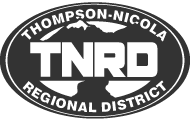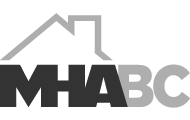We Work with Awesome People






Weighing in the Pro’s & Cons
The online world is a forever changing movement with its own unique set of trends and inventive technology being pushed to the limits. It’s become an expressive gateway for designers, developers and programmers to push the envelope and observe its results.
Over the course of the last decade, we’ve gone from converting restrictive table made websites to free flowing table-less designs which can be read across multiple devices. Accessibility has opened this gate even further triggering the community to find new and accessible ways to deliver information.
To touch on accessibility – it’s not about just meeting the needs of people with disabilities, but to also meet the needs of say someone having content that’s translatable for different language. Perhaps a businessman is from Turkey and well versed in speaking the English language, however prefers to read in Turkish. By providing accessible content, you are allowing it to be read in multiple languages.
With this all said, I bring you the latest trend known as the ‘Smart Site’ AKA The Single Pager.
As a designer I can see both sides of its value, however with all emerging methods of delivering information there is a time and place for these kinds of solutions. Before a decision can be made on whether to create a Smart Site, you have to ask yourself… ‘Will this be a content heavy website? Image driven? E-com? If the answer is yes, then a Smart Site may not be an effective solution to consider.
For those who may not know what a Smart Site is, it can be defined simply as a single page website. What this means is that instead of a website having multiple pages, all the information is contained on a single page. While most small businesses may greatly benefit from these sites, larger more complex business may not.
The Pros of Smart Sites:
Costs Less to Build
The main benefit that most businesses will see immediately is that it typically Smart Sites costs less to build. Since only 1 page is being developed, there is only 1 page to test for compliance, compatibility against browsers and devices, as well as one page to target SEO.
Quality of Content & Design Simplicity
The quality of content is critical in the success of these sites since content needs to be slim and trim without losing the message. Content is typically stripped of excessive information, is more keyword focused, and provides just enough information and imagery to entice conversion. The bulk of time spent making these sites is not so much on the design but rather honing in on the message being delivered and tying it in with visuals which will do most of the talking.
Higher Conversion Rates
Like the greatest story ever told, your website should tell a short story and not a novel. Since the average behaviour performed on a website is scrolling, you can carefully construct your content so that the end user can learn who you are, how awesome your product or service is, the benefits of owning your product or utilizing your service, and finally the closer. Carefully constructed pages ultimately lead your user to a sequence of events that will help to build trust in the end user and convert them to paying customers in the end.
Easier to Manage
When a site becomes too large it can become very expensive to maintain. Smart Sites generally have a lot less content to manage which means there is a good chance that maintenance will be substantially lowered. Unless you have a promo or something is time sensitive, odds are your website won’t require much updating and become timeless for a longer period.
The Cons of Smart Sites:
Risk of Loading Times Increase
While this isn’t true in all cases, it’s really a catch 20/20. What it really boils down to is if your Smart Site is content driven or image driven, or how much script is making your page run. A poorly constructed Smart Site can actually increase loading time and can have a detrimental effect on the user experience. If you have large image banners which have not been optimized properly, you run the risk of your users waiting for all your images to load. While the bulk of city folks are on faster networks these days, you have to ask “Are these users my targeted audience?”
Example: John’s website sells cattle supplies. His target audience will most likely be farmers, or people in the farming industry. Although his business is known across Canada and has purchasing customers out East; most of his business is local to British Columbia. John has to consider the needs of the majority end user which means these farms may have little to no cell reception or are using slower networks. John’s new website will have to be more content driven than image driven. I’m not saying he can’t have images, but the types of images and their significance is going to be more critically analyzed, then say a business who caters to main stream users with access to 4G networks.
Scale-ability is Affected
Since the design of a Smart Site is finely catered around its content like an aging brandy, this poses a great problem in scale-ability. The results are that there isn’t much room for changes or modifications without it affecting the design and/or structure of the site.
Example: When additional content is added, it can affect the visuals and how it’s presented on the page. It can force content to cause gaping amounts of white space, or break the structure entirely by forcing content to the edge or below.
Shareable Content is Limited
When you have a single page website, it makes it very difficult for end users to share segments of your content. For instance, when sharing information with others on multi-page sites, you can share a link to direct contact information pages. Single page websites just don’t match up.
Content Options are Restrictive
Single page websites are also limited to the types of features that are available to them since loading time is critical in keeping this number down. With multi-page sites you can include blog options, and galleries as well as other usable features to enhance the user experience. Some single page websites can overcome this by offering feeds which stream through into the page (which is a great solution), however in the end to have to be careful about having too many streams pulling into your page. The more streams from outside sources, the longer it will take for your page to load.
Conclusion:
Each and every business will have their own needs and requirements, their own unique audience and story to tell. There is no right way or wrong way however there is the best approach and it’s important to keep that in mind. To jump on the band wagon and make every website a one pager because it’s currently the trend is in my opinion the wrong approach which can be disastrous. The choice to have a single page website – has to be a viable decision and carefully thought through.
Smart Sites may be the perfect solution for smaller businesses who are selling a single product or service, or if perhaps the end user is primarily on faster networks where load times are not of issue.
While not for everyone, a decision shouldn’t be made purely because it’s ‘trending’.






Made in Canada - © 2024 Fresh Brand Marketing - All Rights Reserved.